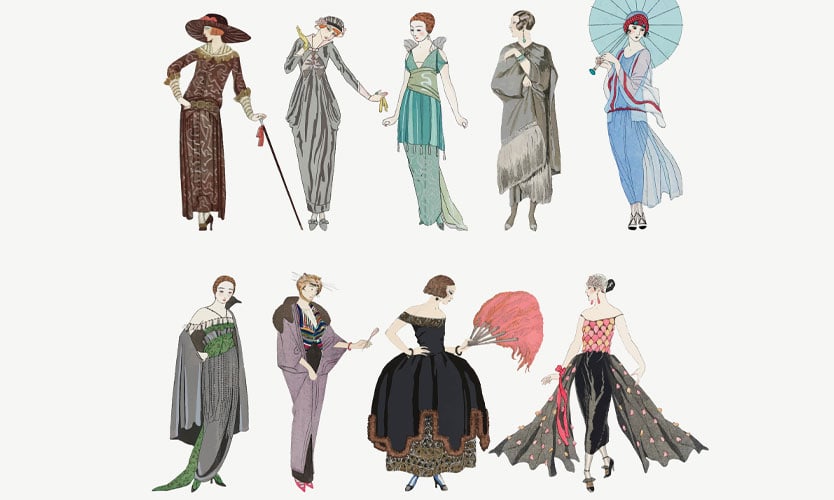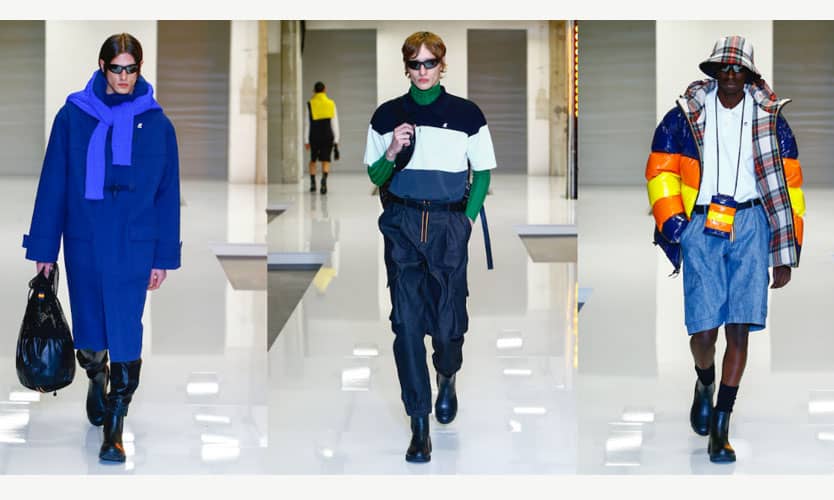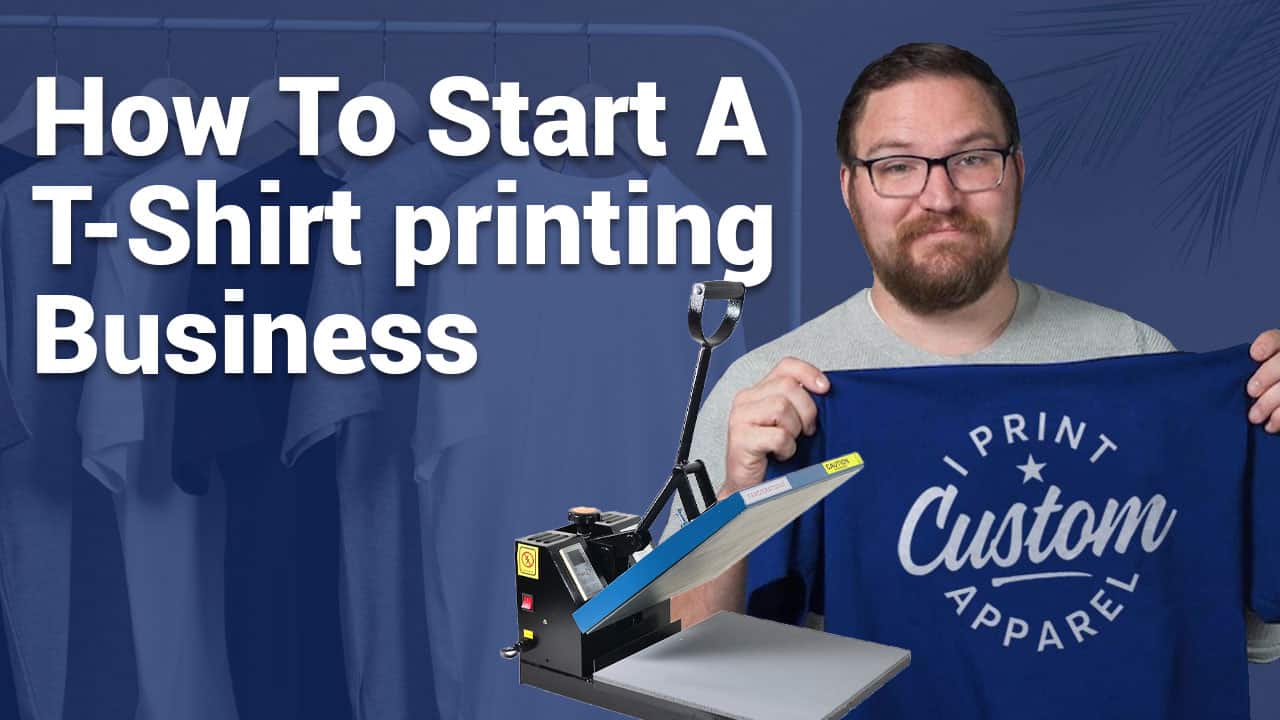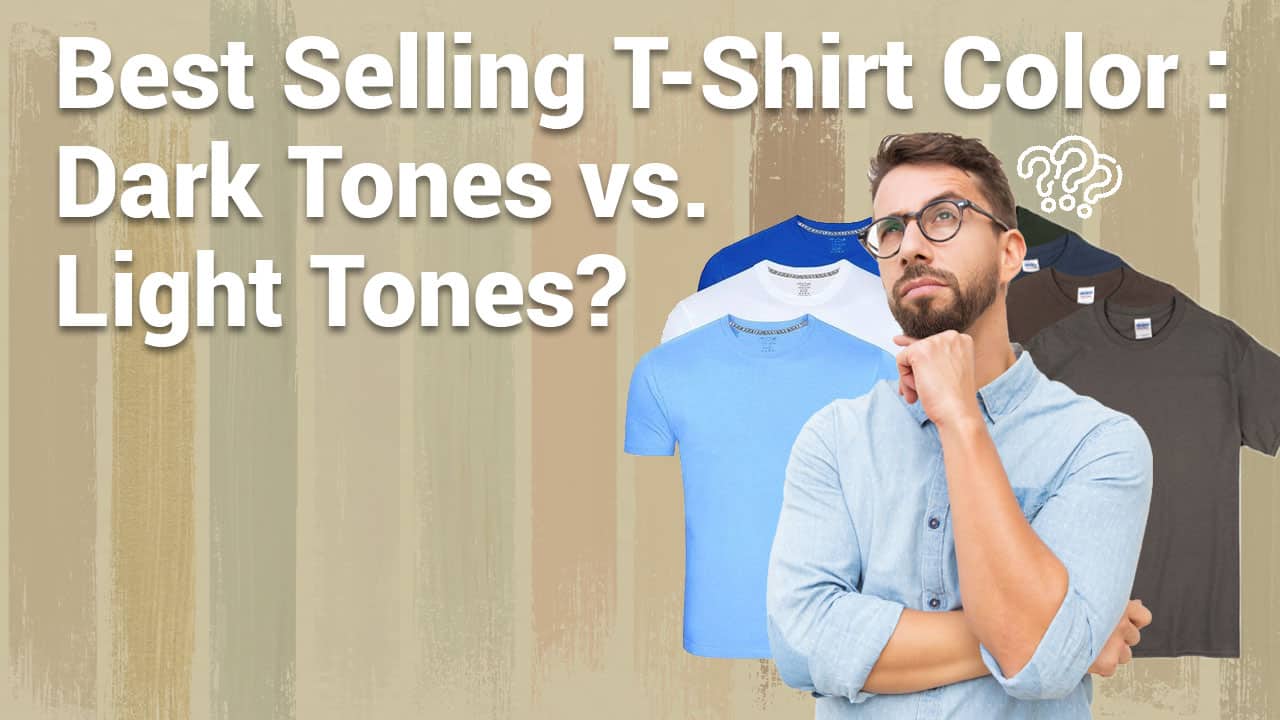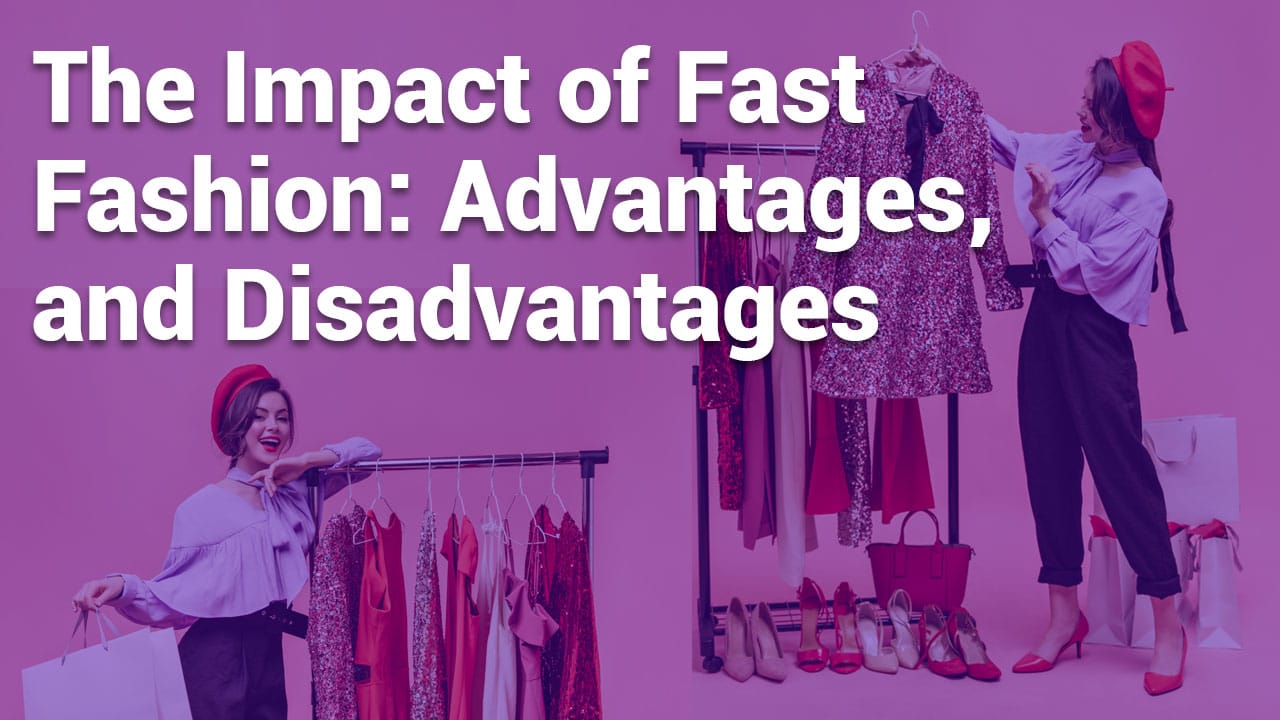
Understanding Fast Fashion: Its Impact, Advantages, and Disadvantages
Fast fashion, a term that has become synonymous with the modern clothing industry, represents a fundamental shift in how we perceive and consume. In today’s fast-paced world, where trends are constantly evolving, fast fashion has emerged as a dominant force, reshaping the landscape of apparel retailing and challenging traditional fashion models.
Fast fashion is more than just a buzzword; it’s a reflection of our times, characterized by rapid production cycles, affordable prices, and an insatiable appetite for the latest styles. It’s a phenomenon that has touched every corner of the globe, influencing the way we dress, shop, and think about clothing.
Understanding fast fashion is not merely a matter of staying on-trend; it’s a critical exploration of its impact on our environment, our societies, and ourselves. As consumers, we play a pivotal role in this narrative, as our choices have consequences that extend far beyond our individual wardrobes.
In this article, we embark on a journey to unravel the complex tapestry of fast fashion. We will delve into its definition, its origins, and the profound advantages it offers to consumers. We will also confront the stark disadvantages, from its ecological footprint to the ethical questions it raises. And as we navigate this intricate landscape, we’ll shed light on the emerging sustainable fashion movement, demonstrating that change is possible.
Fast fashion is not merely a fleeting trend but a transformative force, and by the end of this exploration, you will be equipped with the knowledge to make informed choices, contribute to a more sustainable industry, and understand the multifaceted nature of this ever-evolving phenomenon.
#1 The Definition and Origins
What is Fast Fashion ?
Fast fashion is a dynamic and innovative approach to clothing production and retailing, characterized by its unique ability to quickly respond to ever-changing fashion trends. Unlike traditional fashion, where collections are designed and produced seasonally, fast fashion brands work on a relentless schedule, releasing new styles and products at an astonishing pace. This rapid production cycle allows them to bridge the gap between the runway and the retail store, making the latest trends accessible to a mass market of consumers.
At its core, fast fashion is about affordability, accessibility, and agility. It thrives on the idea that fashion should be democratized, making it possible for individuals from all walks of life to embrace the latest styles without breaking the bank. Fast fashion brands are known for their ability to offer trendy and fashion-forward clothing at price points that are significantly lower than those of their traditional counterparts.
Origins of Fast Fashion
The roots of fast fashion can be traced back to the 1960s and 70s, a period marked by cultural upheaval and shifts in consumer behavior. During this time, a few visionary retailers began to experiment with the fast fashion model, though it wasn’t yet called by that name.
One of the early pioneers was Zara, a Spanish clothing retailer founded in 1974. Zara adopted a unique business model that involved designing, producing, and delivering new styles to stores in a matter of weeks, as opposed to months. This approach allowed Zara to respond swiftly to emerging trends and customer preferences.
Another key player in the origins of fast fashion was H&M (Hennes & Mauritz), founded in Sweden in 1947. H&M’s fast fashion model, which gained prominence in the 1990s, focused on offering trendy clothing at affordable prices. This approach resonated with consumers, catapulting H&M to international success.
These early adopters set the stage for what would become the fast fashion industry we know today. Fast fashion’s origins lay in the intersection of changing consumer expectations and the innovative strategies of forward-thinking retailers, creating a seismic shift in the world of fashion that continues to shape our clothing choices and the industry as a whole.
#2 The Advantages
Affordability and Accessibility
One of the most significant advantages of fast fashion is its unparalleled affordability. Fast fashion brands have mastered the art of delivering trendy clothing at price points that cater to a wide range of consumers. This affordability is made possible through various strategies, including streamlined supply chains, cost-effective materials, and efficient production processes.
Consumers no longer need to break the bank to stay in vogue. They can readily access the latest styles and wardrobe updates without the guilt of overspending. Fast fashion democratizes fashion by eliminating the exclusivity that was once associated with designer labels. It empowers individuals from diverse socioeconomic backgrounds to participate in the fashion world and express their personal style without financial constraints.
Variety and Trend Availability
Fast fashion’s ability to respond swiftly to emerging trends is another advantage cherished by consumers. Unlike traditional fashion, where collections are often planned months in advance, fast fashion brands have the agility to design, produce, and release new styles within a matter of weeks. This means that shoppers can find a continuous influx of fresh and exciting clothing options on store shelves and online.
Moreover, fast fashion keeps consumers engaged with an ever-changing array of styles. Whether it’s adapting runway looks, creating statement pieces, or embracing street-style influences, fast fashion brands cater to a diverse range of tastes and preferences. This variety allows individuals to experiment with their choices, staying ahead of the curve and expressing their uniqueness.
Success Stories in Fast Fashion
Several fast fashion brands have made remarkable strides in the industry by harnessing the advantages of affordability, accessibility, and variety. Zara, for instance, has become a global giant, known for its ability to quickly transform fashion inspirations into ready-to-wear collections. With thousands of stores worldwide, Zara is celebrated for its ability to offer runway-inspired clothing at prices that don’t break the bank.
H&M is another prominent success story in the fast fashion world. This Swedish retailer has expanded its presence to numerous countries, providing an extensive range of stylish clothing and accessories at competitive prices. H&M’s commitment to sustainability also aligns with evolving consumer values, showing that fast fashion brands can adapt to changing demands.
Forever 21, known for its wide selection of affordable clothing, and ASOS, a global online retailer offering a vast range of trendy styles, are also noteworthy players in the fast fashion arena.
These brands exemplify how fast fashion has not only captured the hearts of consumers worldwide but has also shaped the retail landscape, making fashionable clothing accessible to millions and sparking a cultural shift in how we approach fashion.
#3 The Disadvantages
Environmental Impact
Fast fashion’s breakneck speed and focus on producing low-cost garments come at a significant environmental cost. One of the foremost concerns is the generation of massive amounts of textile waste. The relentless cycle of new collections and trend turnover encourages consumers to discard clothing quickly, leading to overflowing landfills.
Additionally, the production of fast fashion often relies on resource-intensive processes, including water and energy consumption. The widespread use of synthetic materials in fast fashion garments, such as polyester, contributes to microfiber pollution in our oceans. Moreover, the carbon footprint associated with transporting clothing globally further exacerbates the industry’s environmental impact.
Ethical Concerns
The fast fashion industry has been marred by ethical concerns, drawing attention to the exploitation of labor in garment factories, particularly in developing countries. Low labor costs and minimal regulations in these regions make them attractive locations for production. Unfortunately, this has led to situations where workers, often paid meager wages, endure poor working conditions, long hours, and even unsafe environments.
Child labor and forced labor have also been reported in some instances, highlighting the egregious ethical issues within the fast fashion supply chain. The drive to reduce costs and maximize profits has, in some cases, overshadowed the welfare and rights of the workers who make the clothing.
Psychological and Societal Implications
Fast fashion promotes a “wear and discard” mentality among consumers. The constant influx of new styles encourages individuals to view clothing as disposable, leading to increased consumption and waste. This psychological shift has far-reaching societal implications, as it reinforces a culture of overconsumption and disposability.
Furthermore, the pressure to keep up with rapidly changing trends can lead to compulsive buying behavior, contributing to issues like debt and clutter. The “buy now, wear once” mindset perpetuates a cycle of consumption that may not align with sustainable living practices or personal financial well-being.
Societally, fast fashion’s emphasis on superficial trends can undermine individual self-esteem and promote unrealistic body ideals. It encourages consumers to value clothing for its transient fashion appeal rather than the quality, durability, or personal meaning it can hold.
The cumulative effect of these disadvantages highlights the complexities and ethical dilemmas inherent in fast fashion. While it offers accessibility and affordability, it does so at a substantial cost to the environment, worker welfare, and consumer well-being. As such, it prompts us to reflect not only on the clothes we wear but the values and impacts we support with our fashion choices.
#4 The Sustainable Fashion Movement
Environmental Impact
In response to the environmental and ethical concerns surrounding fast fashion, there has been a notable surge in awareness of sustainability within the fashion industry. This growing consciousness has been propelled by various factors, including increased media coverage of fashion’s environmental impact, documentaries revealing the dark side of the industry, and a heightened understanding of the urgency of addressing climate change.
Consumers, in particular, are becoming more discerning and demanding greater transparency from fashion brands. They are increasingly seeking clothing that aligns with their values and reflects a commitment to sustainability and ethical practices.
Efforts Towards Sustainability
Both consumers and brands have begun to embrace sustainable fashion practices as a means of addressing the industry’s challenges:
- Consumer Initiatives: Many consumers are now more conscious of their fashion choices. They seek out clothing made from eco-friendly materials and are willing to pay a premium for products that adhere to ethical and sustainable standards. This shift in consumer behavior sends a powerful message to the industry, encouraging brands to adopt sustainable practices.
- Eco-Friendly Materials: Sustainable fashion has witnessed the emergence of eco-friendly materials. Organic cotton, hemp, bamboo, and recycled fabrics are increasingly used to create clothing with a reduced environmental footprint. These materials often require fewer resources and are less polluting compared to conventional fabrics.
- Recycling Initiatives: Recycling and upcycling initiatives have gained momentum. Some brands now offer programs where customers can return old garments for recycling. This approach helps reduce textile waste and promotes a circular economy, where materials are reused and repurposed.
- Ethical Fashion Brands: A growing number of brands are committed to fair labor practices. These ethical brands ensure that workers receive fair wages, work in safe conditions, and have access to benefits. Supporting such brands helps drive change and promote ethical treatment within the industry.
Prominent fashion labels are also making strides toward sustainability. Brands like Patagonia, EILEEN FISHER, and Stella McCartney have placed sustainability at the forefront of their missions, setting industry standards for responsible production.
As the sustainable fashion movement gains traction, it underscores the industry’s potential for transformation. Brands that prioritize sustainability are not only responding to consumer demand but are also recognizing the importance of safeguarding the planet and respecting the dignity of workers. Together, consumers, ethical brands, and sustainable initiatives are rewriting the narrative of the fashion industry, offering a hopeful vision for a more responsible and environmentally-conscious future.
#5 Tips for Responsible Fashion Consumption
Making Responsible Fashion Choices
As consumers, we have the power to influence the fashion industry’s direction by making more responsible choices. Here are some practical tips to help you become a more conscious and sustainable fashion consumer:
- Invest in Quality: Prioritize quality over quantity. Choose well-made, durable clothing that lasts longer. High-quality pieces often withstand wear and tear, reducing the need for frequent replacements.
- Support Sustainable Brands: Research and support fashion brands that prioritize sustainability, ethical practices, and transparency. Look for certifications like Fair Trade, Global Organic Textile Standard (GOTS), or OEKO-TEX Standard 100 when shopping.
- Second-Hand Shopping: Explore thrift stores, vintage shops, and online second-hand marketplaces to give pre-loved clothing a new life. Thrifting not only reduces waste but also offers unique and often affordable finds.
- Mindful Consumption: Practice mindful shopping by considering whether a clothing item aligns with your personal style and needs. Avoid impulse purchases and opt for pieces that have lasting appeal in your wardrobe.
- Repair and Upcycle: Instead of discarding damaged clothing, consider repairing or upcycling them. Learn basic sewing skills or support local tailors and repair services to extend the life of your garments.
Supporting Sustainable and Ethical Brands
When supporting sustainable and ethical fashion brands, consider the following steps:
- Research: Take the time to research brands before making a purchase. Look for information on their manufacturing processes, materials, and ethical practices on their websites.
- Read Reviews: Read reviews and testimonials from other customers. This way you can get an idea of the brand’s reputation and the quality of their products.
- Transparency: Support brands that are transparent about their supply chain, labor conditions, and environmental efforts. Companies that disclose this information are often more committed to responsible practices.
- Certifications: Look for certifications that indicate a brand’s commitment to sustainability and ethics. These certifications provide assurance that the brand meets specific standards.
Quality Over Quantity
Building a sustainable wardrobe is not about having a vast collection of clothing. Instead, it’s about curating a selection of high-quality, versatile pieces that stand the test of time. By emphasizing quality over quantity, you reduce your fashion footprint and contribute to a more sustainable future.
Remember that responsible consumption is not about perfection but progress. Every conscious choice you make, whether it’s opting for sustainable brands, repairing clothing, or simply buying less, contributes to a positive change in the industry. By being mindful consumers, we can collectively drive the transition toward a more sustainable and ethical landscape.
Conclusion
In the journey through the realm of fashion, fast stands as both a marvel and a challenge, offering affordable and ever-evolving styles. But one that carries a heavy environmental, ethical, and societal burden.
Fast fashion’s essence lies in its rapid response to fashion trends, its affordability, and its accessibility, making it a force to be reckoned with in the modern clothing industry. However, as we have explored, its advantages come at a considerable cost. Obviously from its environmental footprint to ethical concerns and its role in promoting disposable consumer behavior.
Understanding fast fashion goes beyond staying on-trend; it is a vital step in acknowledging the profound impact it has on our planet, on workers within the industry, and on our own consumption patterns.
But there is hope, and it shines through the sustainable movement. As awareness of fashion’s sustainability challenges grows, both consumers and brands are stepping up to the plate. Individuals are making more conscious choices supporting ethical and eco-friendly brands. They are embracing a “less is more” philosophy that values quality over quantity.
Sustainable fashion is not a mere trend; it is a fundamental shift towards responsible practices that prioritize the well-being of people and the planet. As consumers, the choices we make matter, and they have the power to shape the industry’s future.
In closing, let us remember that each purchase is not just a transaction; it is a statement of our values. By staying informed, making mindful choices, and supporting sustainable practices, we can collectively steer the fashion industry toward a more responsible and environmentally-conscious path. Together, we can ensure that fashion is not just a reflection of style, but also a reflection of our commitment to a better world.


